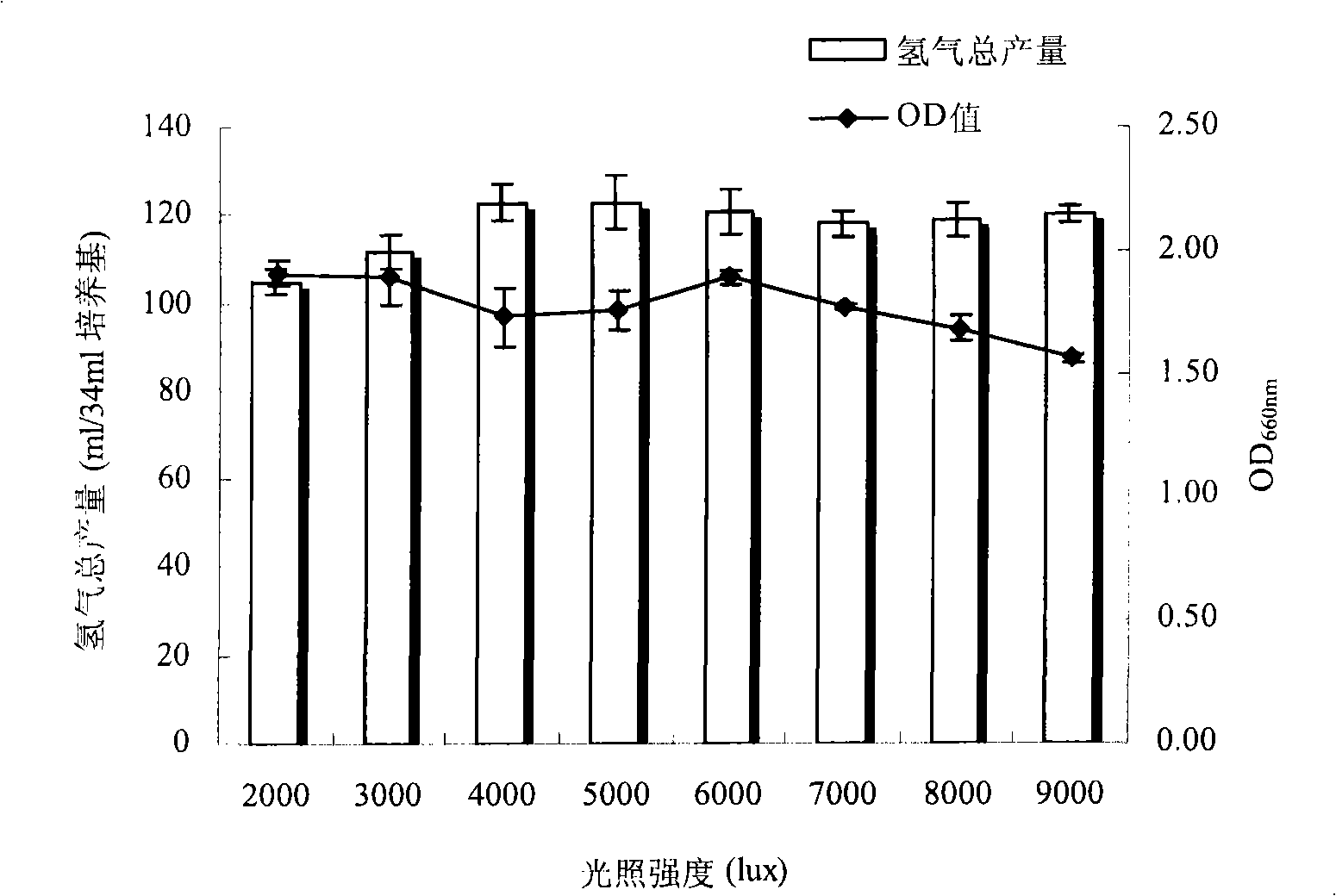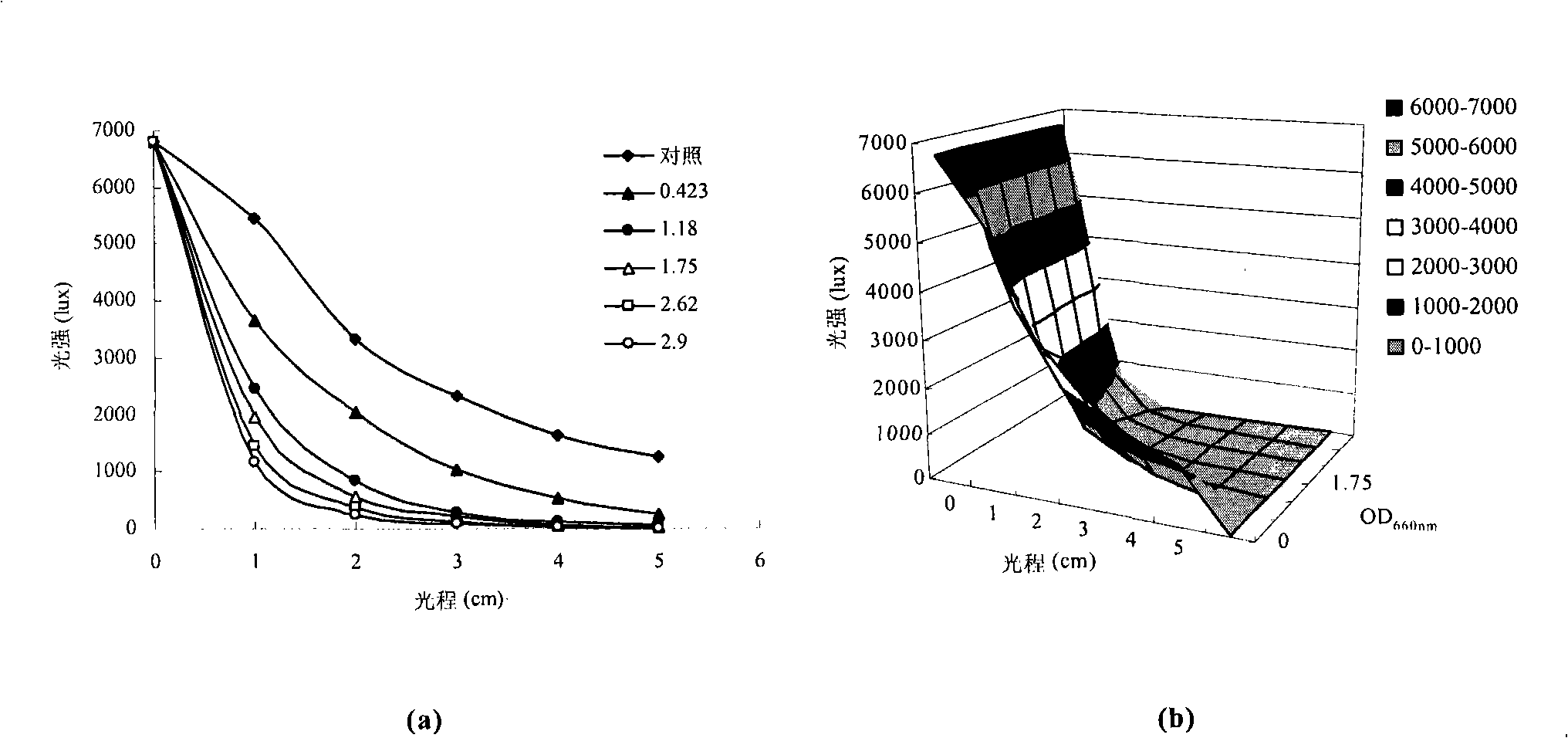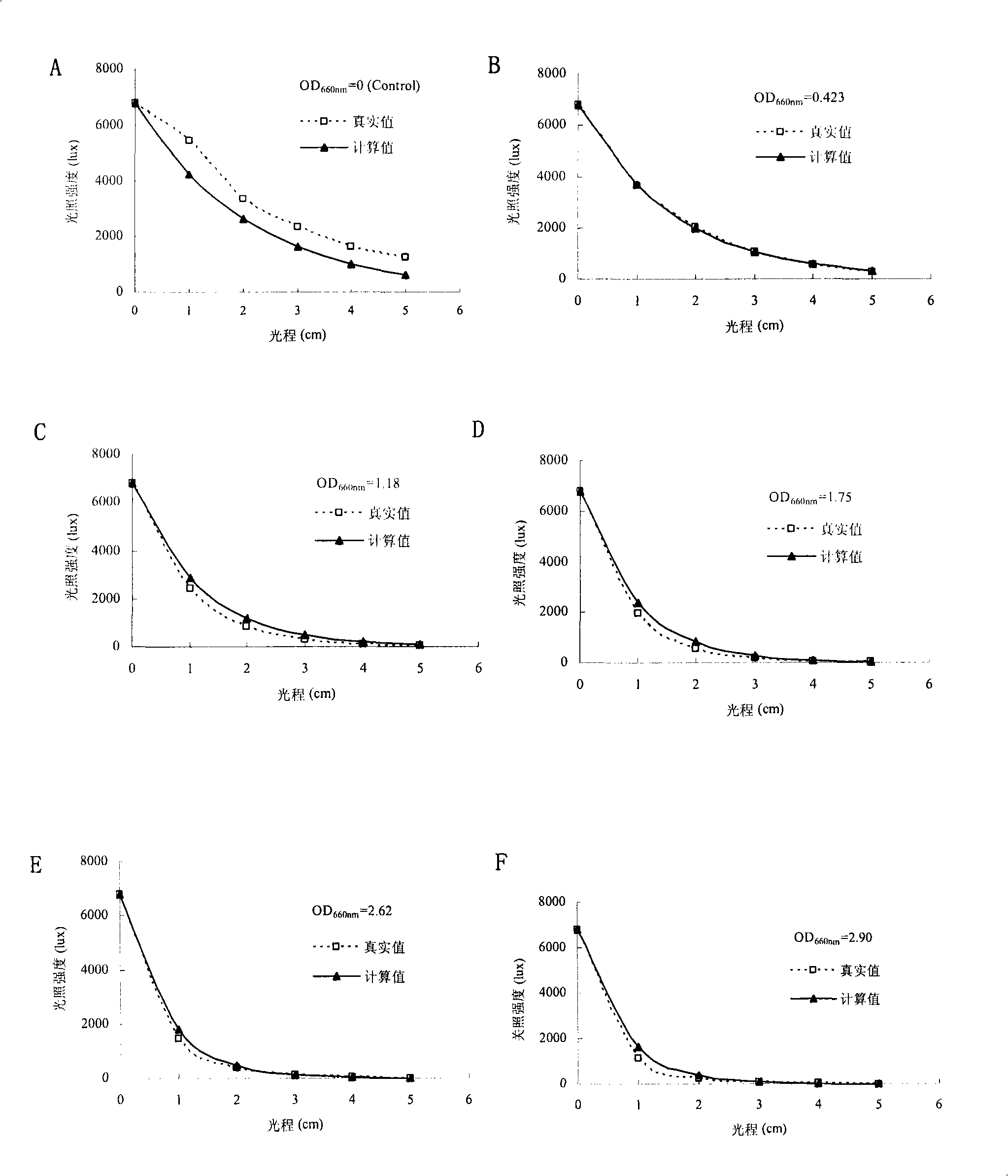Novel photosynthetic organism hydrogen generation process based on oscillation-light-filling strategy
A technology of photosynthetic bacteria and hydrogen, applied in the energy field, can solve problems such as hindering light transmission, decreasing hydrogen production efficiency, and uneven light intensity distribution
- Summary
- Abstract
- Description
- Claims
- Application Information
AI Technical Summary
Problems solved by technology
Method used
Image
Examples
Embodiment 1
[0107] 1Materials and methods
[0108] 1.1 Strains and culture conditions
[0109] Strain: Rhodobacter sphaeroides ZX-5 (public number CN 101168729A purchased from Shanghai Institutes for Biological Sciences, Chinese Academy of Sciences);
[0110] Seed culture: 1ml Rhodobacter sphaeroides ZX-5 glycerol tube bacteria solution was inoculated into a 250ml Erlenmeyer flask containing 100ml RCVBN seed medium, initial pH=7±0.5, 30±1℃, 200rpm, aerobic culture without light, about 17h inoculation In hydrogen production medium;
[0111] Hydrogen production culture: 1ml seed solution is inoculated in 38ml photosynthetic test tube (sealed with rubber stopper) containing 34ml RCVBN hydrogen production medium (where the nitrogen source is replaced by sodium L-glutamate), initial pH=7±0.5, 30 ±1℃, light anaerobic culture, and use 50ml sterile syringe to collect hydrogen.
[0112] 1.2 Determination of light attenuation kinetics
[0113] Take a series of photosynthetic bacteria culture solutions of di...
Embodiment 2
[0193] Using Rhodobacter capsulatus to produce hydrogen by shaking fermentation
[0194] Example 1 was repeated, and the main difference was that: Rhodobacter capsulatus (Shi X-Y et al., 2005) as given in Table 6 was used to replace Rhodobactersphaeroides ZX-5.
[0195] The results show that when the carbon source is 30mM acetic acid, when I 0 Is 4000lux, I 1 In the case of 6000 lux, although the total substrate conversion rate is not greatly improved (about 10-20%), the hydrogen production rate is greatly increased, the maximum hydrogen production rate is increased by 80%, and the average hydrogen production rate is also increased by 70%. The range shortens the production cycle.
Embodiment 3
[0197] The influence of other factors (such as the amount of inoculation) on the substrate conversion rate
[0198] In this example, by changing the inoculum amount, the effect on the substrate conversion rate and hydrogen production rate during static culture or non-static culture (shaking fermentation) was observed.
PUM
 Login to View More
Login to View More Abstract
Description
Claims
Application Information
 Login to View More
Login to View More - R&D
- Intellectual Property
- Life Sciences
- Materials
- Tech Scout
- Unparalleled Data Quality
- Higher Quality Content
- 60% Fewer Hallucinations
Browse by: Latest US Patents, China's latest patents, Technical Efficacy Thesaurus, Application Domain, Technology Topic, Popular Technical Reports.
© 2025 PatSnap. All rights reserved.Legal|Privacy policy|Modern Slavery Act Transparency Statement|Sitemap|About US| Contact US: help@patsnap.com



